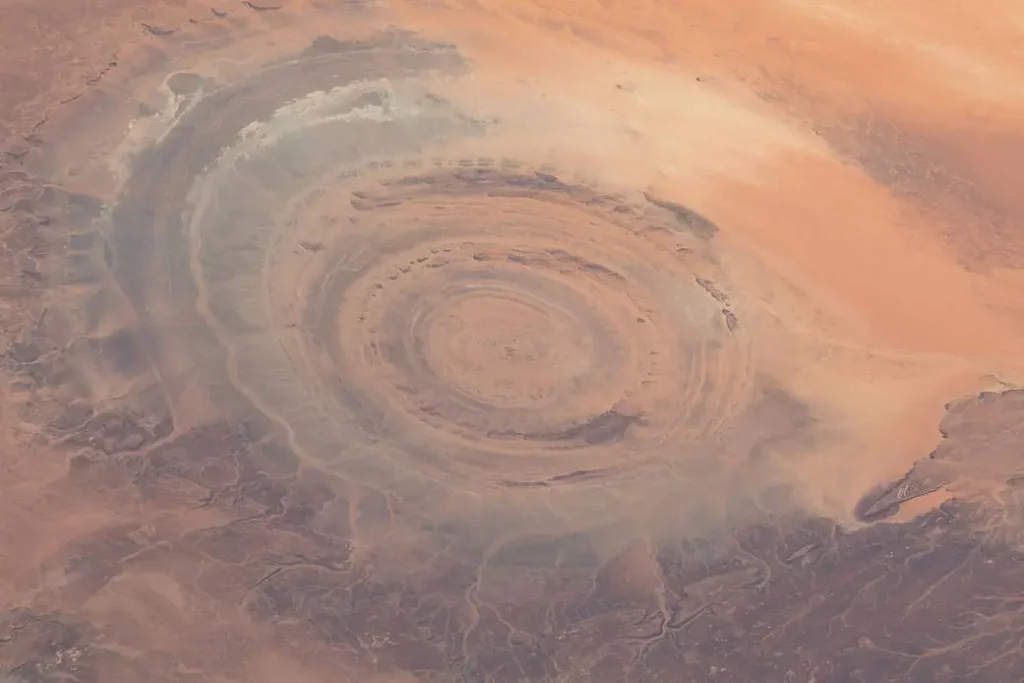
The Richat Structure (Guelb er Richât in Arabic), is a large, round-shaped geological feature found in the Adrar Plateau of the Sahara Desert in Mauritania. It is about 25 miles across and is made up of layers of sedimentary rock that have been worn away by erosion. What makes the Richat Structure so unique is how the layers of rock look like rings around a bullseye.
Inside the Richat Structure are igneous rocks such as rhyolites and gabbros, and a large area of broken rock called a megabreccia. It is also an important archaeological site as it features many Acheulean artifacts, such as tools and weapons made by early humans.
In October 2022, The International Union of Geological Sciences (IUGS) included the Richat Structure as one of the first 100 geological heritage sites in the world [PDF]:
Filed under: Africa geologyThe Richat structure has been a case of scientific debate about the origin of ring structures in the world. There have been several studies to define whether it was an impact structure or intrusive feature. It is a case in point that shows serious scientific inquiry can lead to definite answers. It is one of the most spectacular examples of magma-induced ring structures in the world. It is aesthetically beautiful and unique geological feature whose outline is pronounced by the contrasting landscape of the wider Sahara Desert
Extract from IUGS